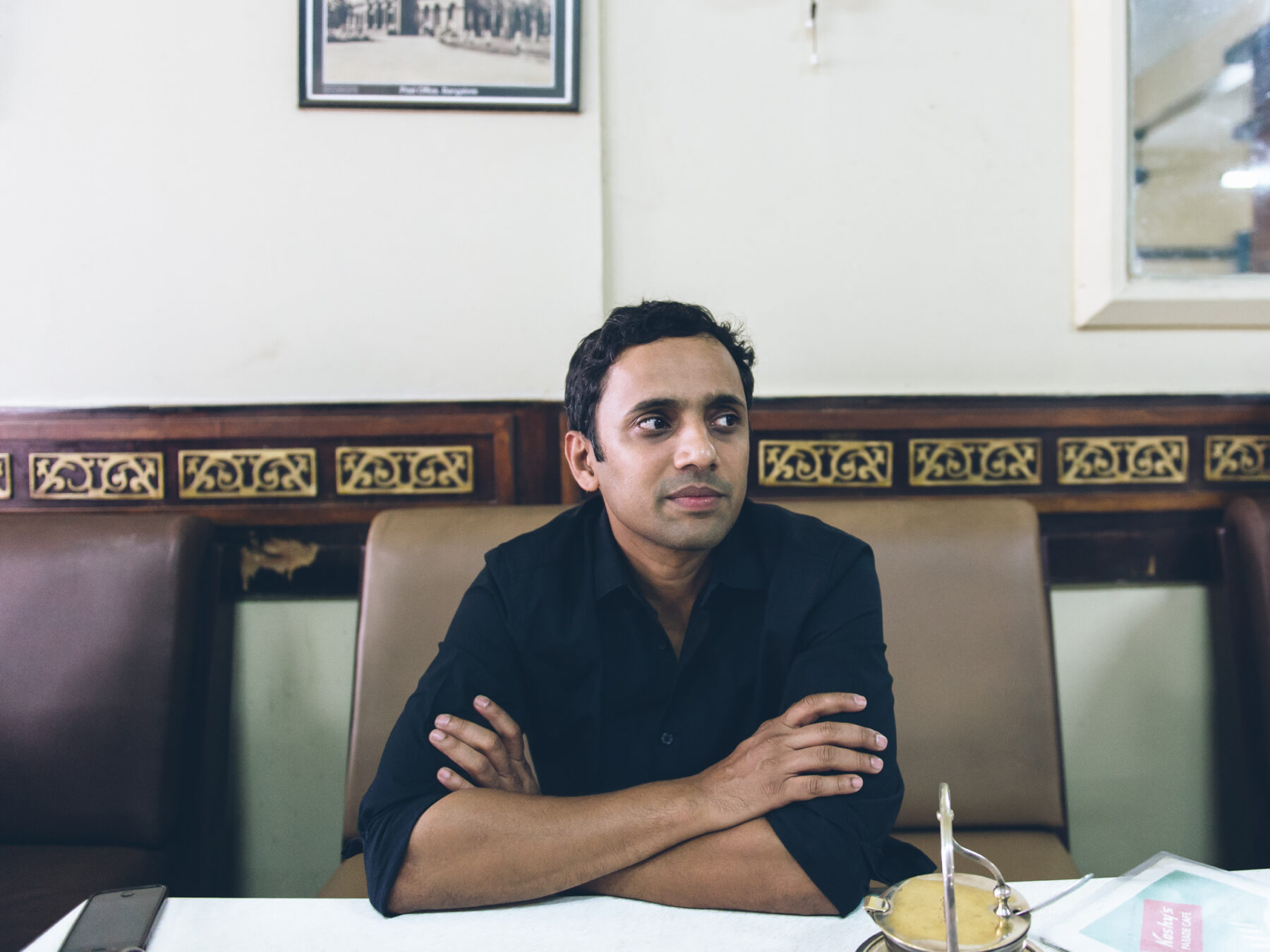The matter at hand is a small debate on the existence of a “Peach Melba” at Bangalore’s local and loved café, Koshy’s.
A certain type of person frequents this haunt; for the chatter, the aged silver sugar pots and old Bangalore (read: pre-tech boom) familiarity. Sometimes people go for the coffee or the mushroom toast. But no one goes for the Peach Melba. The debate comes to an end as Ryan Lobo orders one, confirming our ignorance. Befitting, as he lives most of his life sharing stories of people unknown, drawing attention to the oft unrecognized happenstance that occurs everyday.
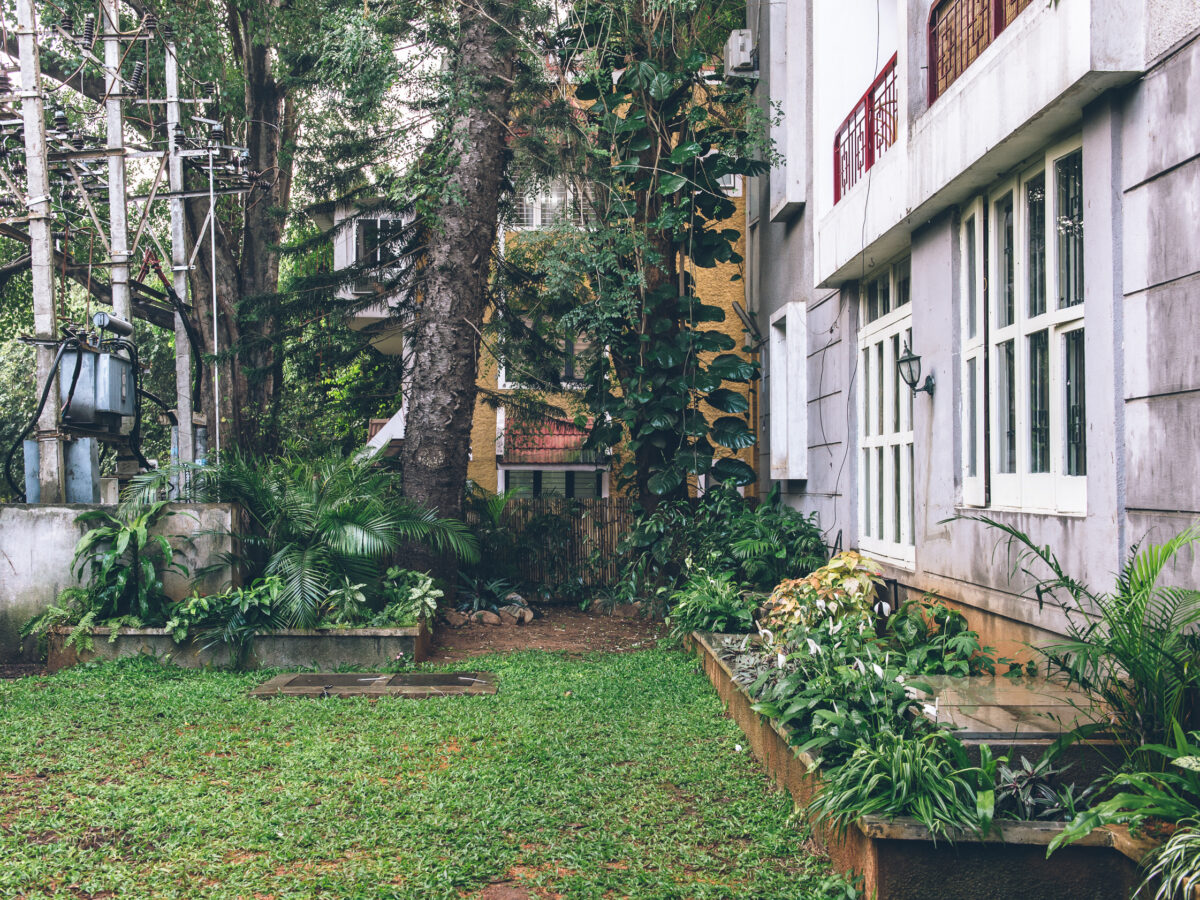
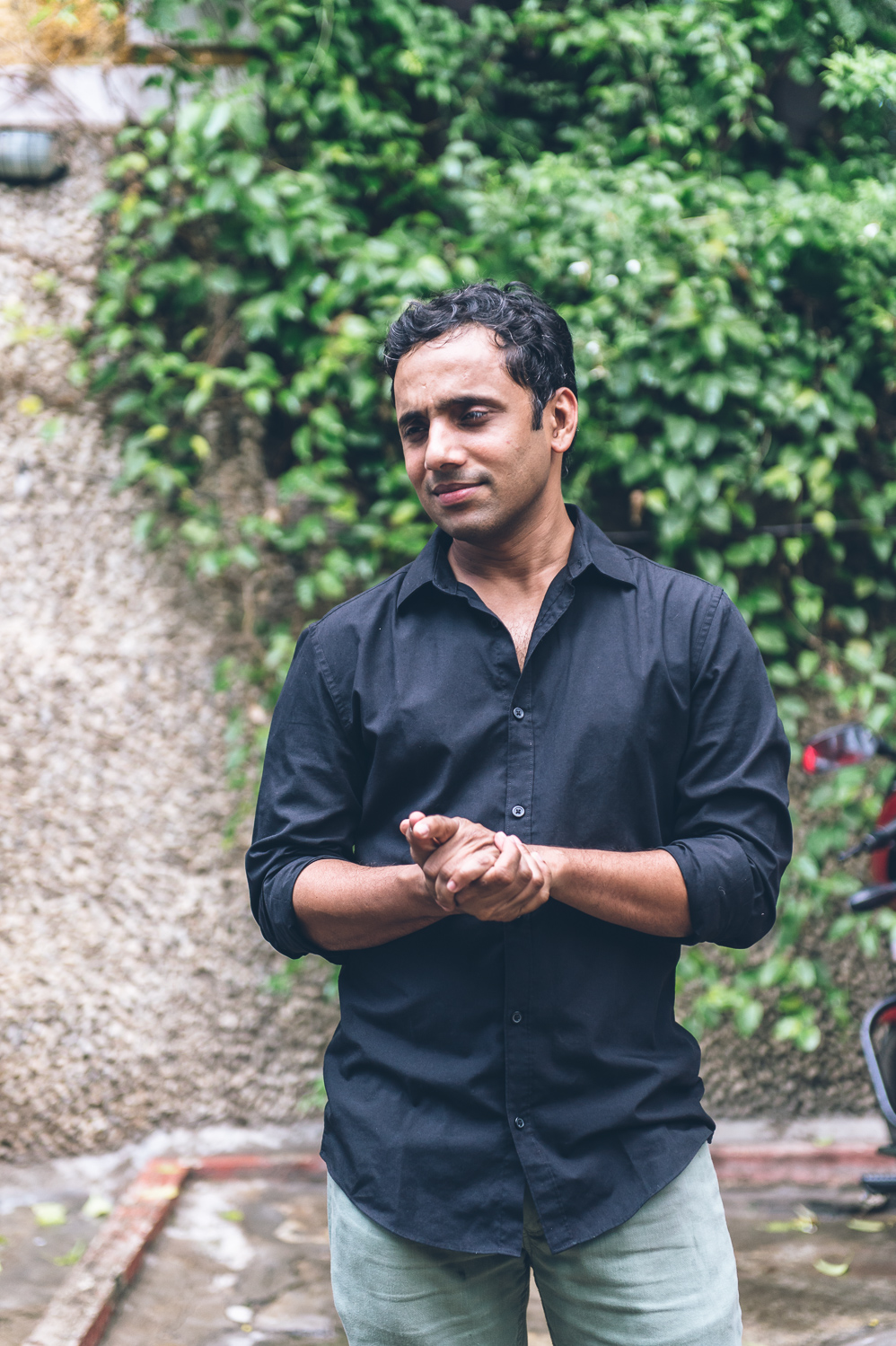
As a documentary photographer and filmmaker, much of Ryan’s work includes a strong narrative of the human condition. He has spent time as a war photographer, including months in Liberia co-producing the award winning The Redemption of General Butt Naked, based on a warlord responsible for the massacre of thousands and currently seeking forgiveness as a baptized Christian evangelist. As a TED speaker, Ryan spoke of the courage shown by Delhi’s fire brigade. He’s also just finished a book for children on everyday monsters with his effervescent yet dry wit.
Born and raised in a once sleepy town transformed into a bustling city, Ryan lives with his fiancée in an apartment that used to be two units, renovated into their haven in the heart of the city. It features a unique mix of restored “roadside” furniture and maps of geographies that no longer exist. He met us few days after Diwali to chat over the sound of leftover firecrackers.
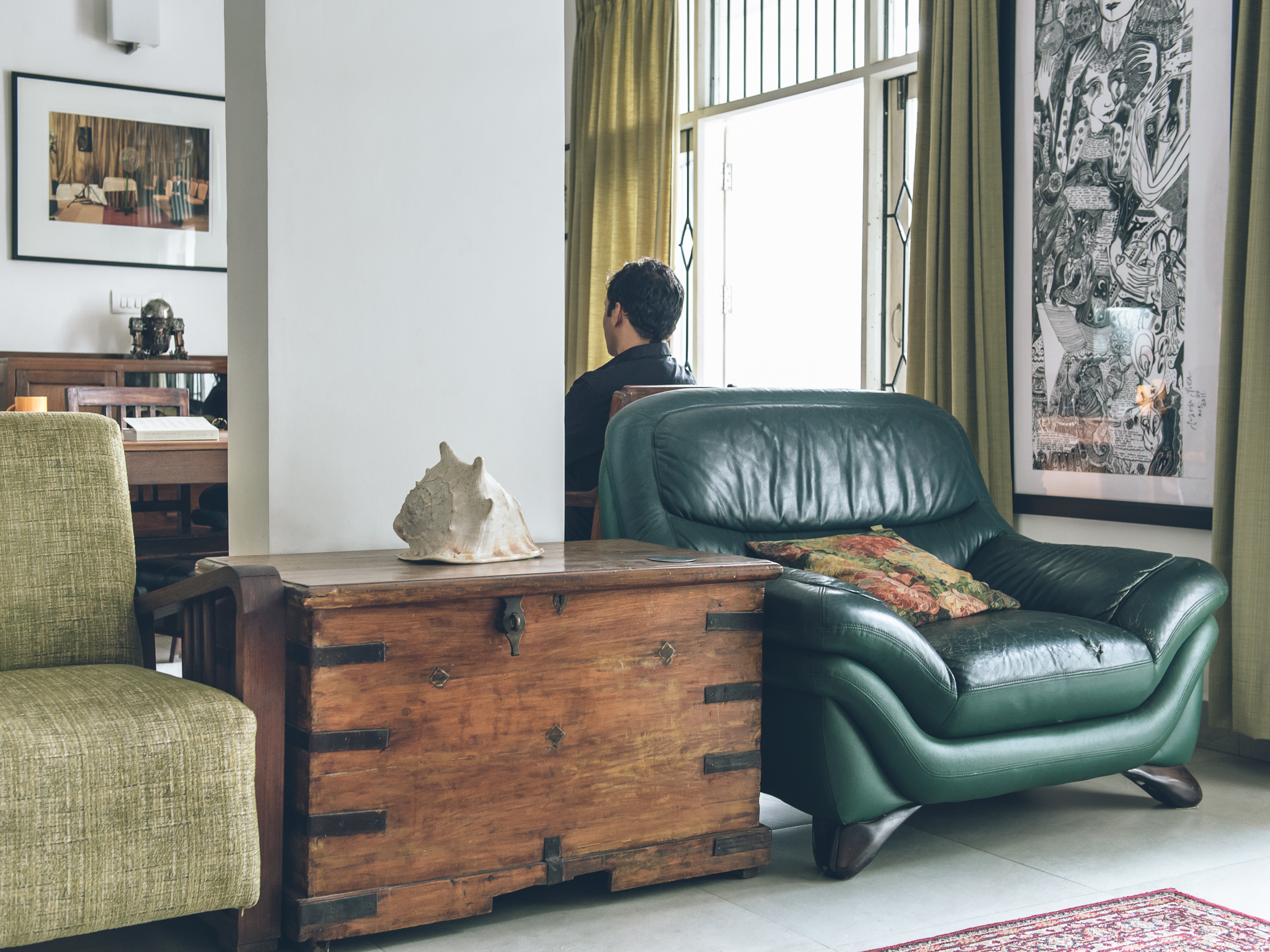
-
What are you working on now?
I am working on quite a few things at the moment, including a book, screenplay, and some work for the Bill and Melinda Gates Foundation. I am also shooting a series on mundane events in India. For instance, a tree fell in my neighborhood and the whole neighborhood came out to watch its removal. I shot it as if it were a mythological story with all the archetypes present. I’m not too sure where it’s going right now but feel compelled to continue with it.
-
So then, how do you describe what you do?
I would like to think of myself as an artist. But I’m not really sure.
-
About calling yourself an artist?
About calling myself anything.
-
What do you seek from your work?
After a certain point you ask yourself what gives you fulfilment and peace. For me, it’s when the work sometimes comes back at you, when it strikes a chord somewhere and then you suddenly feel a part of something larger – that it’s not just you doing the work, but things are flowing through you rather than from you.
For instance, I had pitched and was one of two cameramen who shot a film for National Geographic about the troubles of the Delhi Fire Service (DFS) and how difficult they found it to fight fires. Years later I visited Delhi again on a still photo shoot about the DFS. A riot began as the firefighters arrived late to a slum fire. Mid-riot a man from the crowd jumped atop a fire engine and quelled the rioters, calming them down. Later, when I thanked him for saving us from a thrashing and he said that he had seen this film on National Geographic on the DFS and that it had inspired him to stop the riot. I had shot the film, and was part of the story, part of something good and not somebody just taking pictures. However most of the time, one just does take pictures.
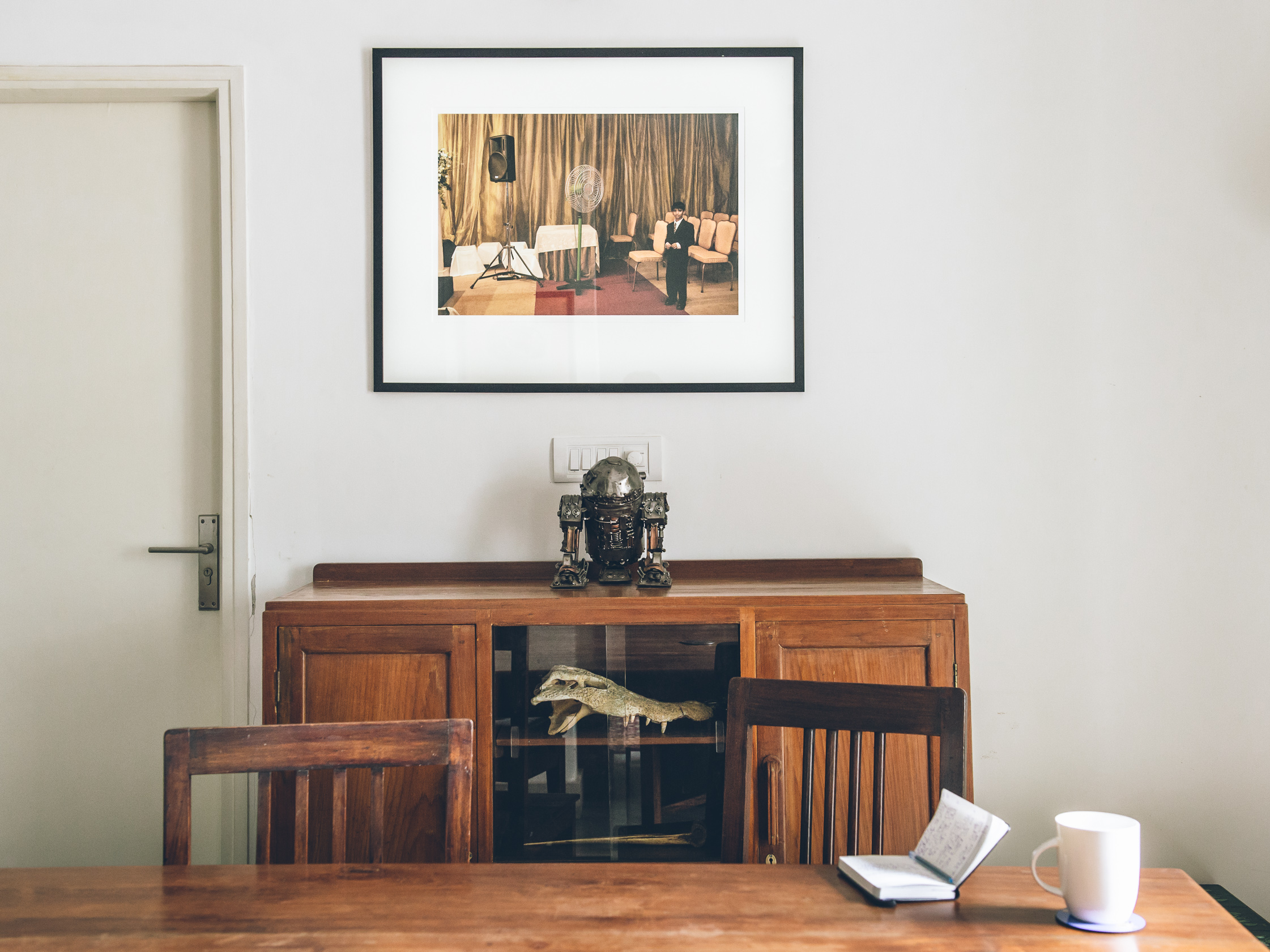
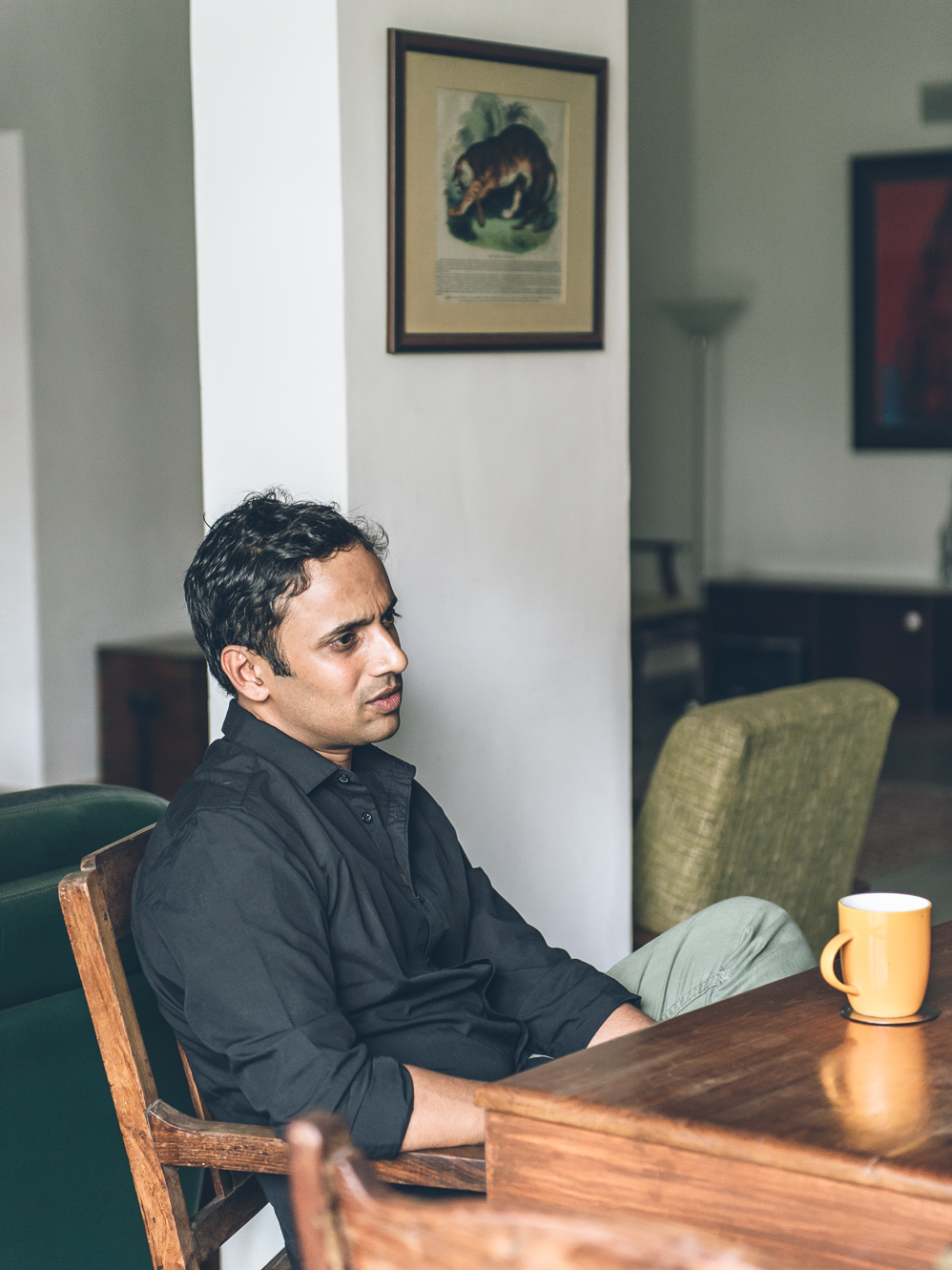
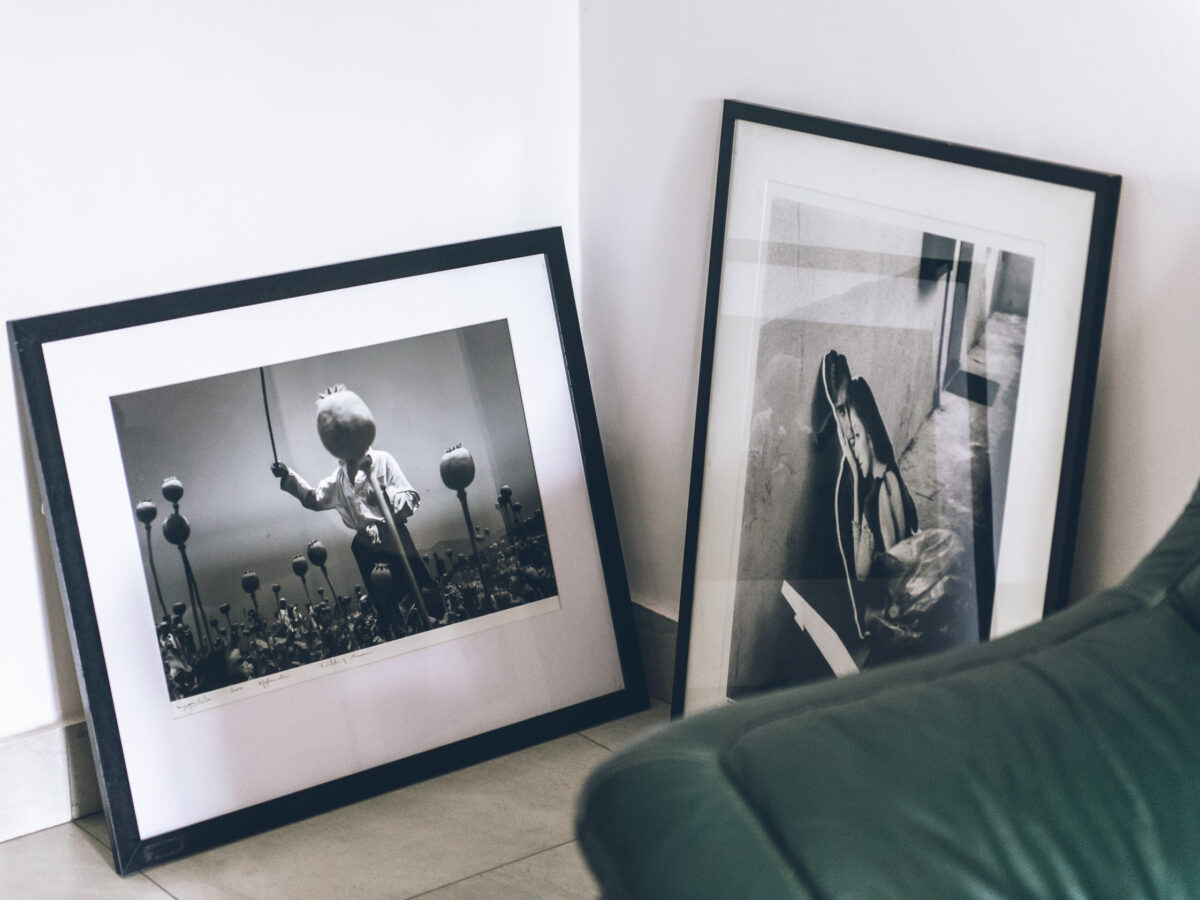
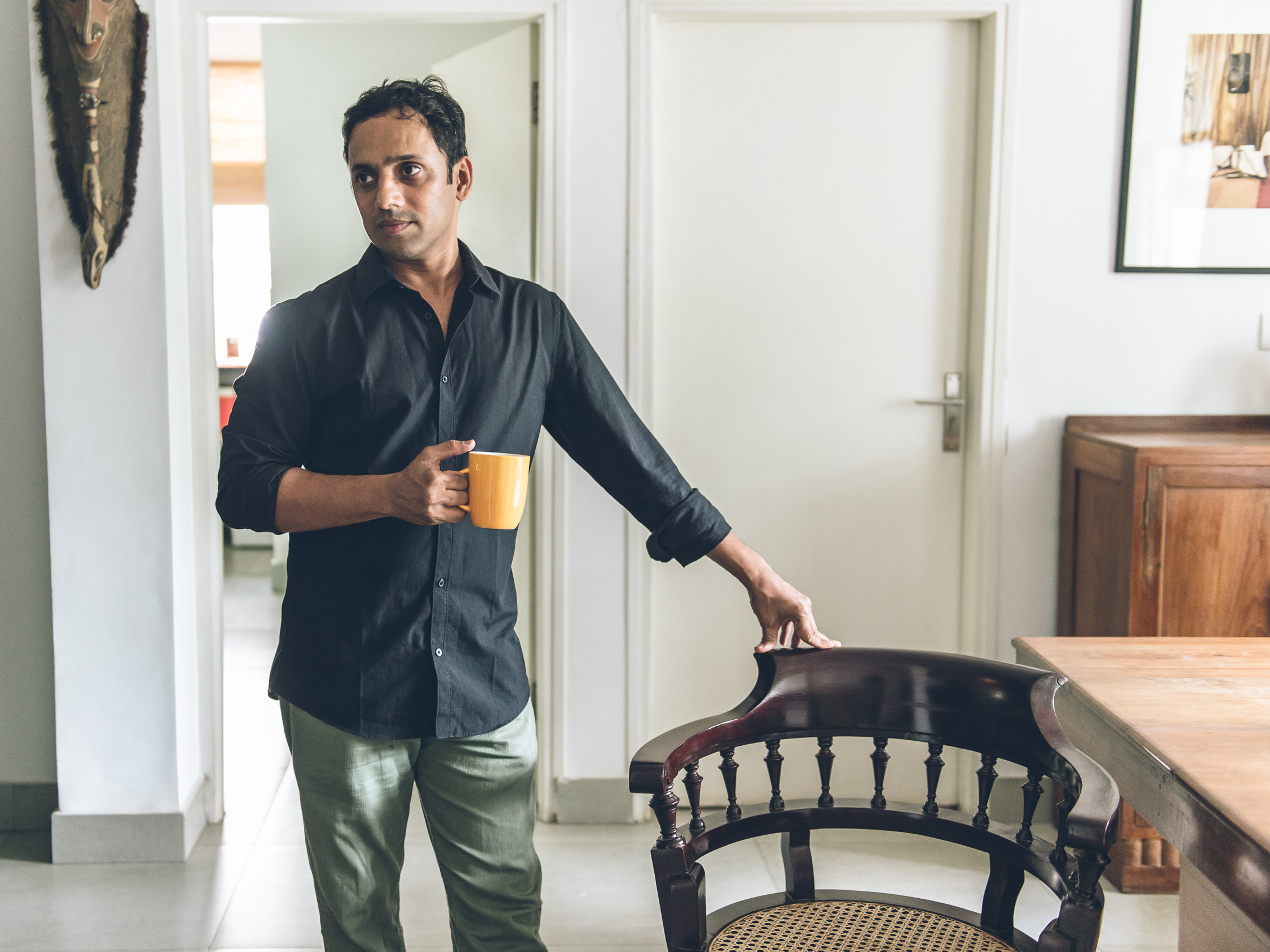
-
You have spoken of fearing for your own life a few times in the line of work.
Yes, but those are largely anecdotes. It has happened once in a while. Most of the time it is very boring; you’re sending invoices, arguing with editors, having creative differences with clients. Or you are waiting for work, self-flagellating, having long winded discussions for no good reason really about non-definable things or something like that. (laughs)
-
Much of your work involves exposing the underdog – is this a conscious effort?
India is a land of underdogs, but now you have the underdogs waking up and becoming worse than any overlord. The yin and yang of who we are includes the darker sides of ourselves. Our so-called humanity of the “West” sometimes obscures these dark parts of our nature whose existence we reject and allow for them to manifest in so many ways. We want to believe in universal peace, justice and an idea of ourselves, which excludes these things. The truth is that our existences are circles of shadow and light, murder and forgiveness, peace and war. Our deepest most primitive archetypes come forth and are as much a part of us as we believe they are a part of our enemies. It will always be no matter the islands we imagine. So I don’t know if “exposing the underdog” is a part of my vocation. I think “comments on the human condition” might be a better way of putting it.
Very often I get paid to tell stories a certain way. I am a professional photographer, I do things which I am paid to do, but I also try and do my own photography to say the things I want to say for my own sanity and soul.
“…there is a new religion in Bangalore; it’s consumerism with its deities in the form of magnified buildings and so much glass, steel and air-conditioning in a city of limited resources.”
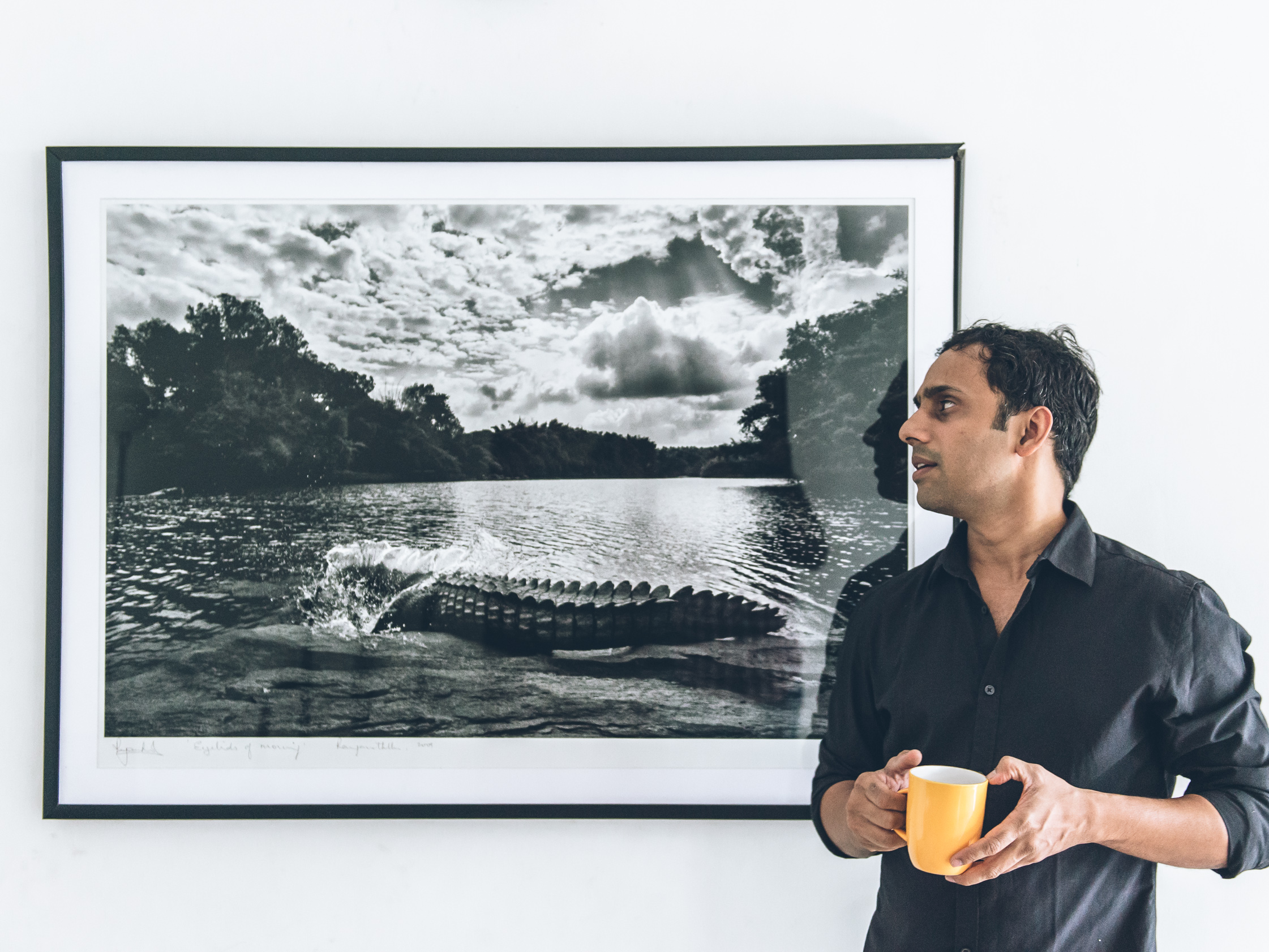
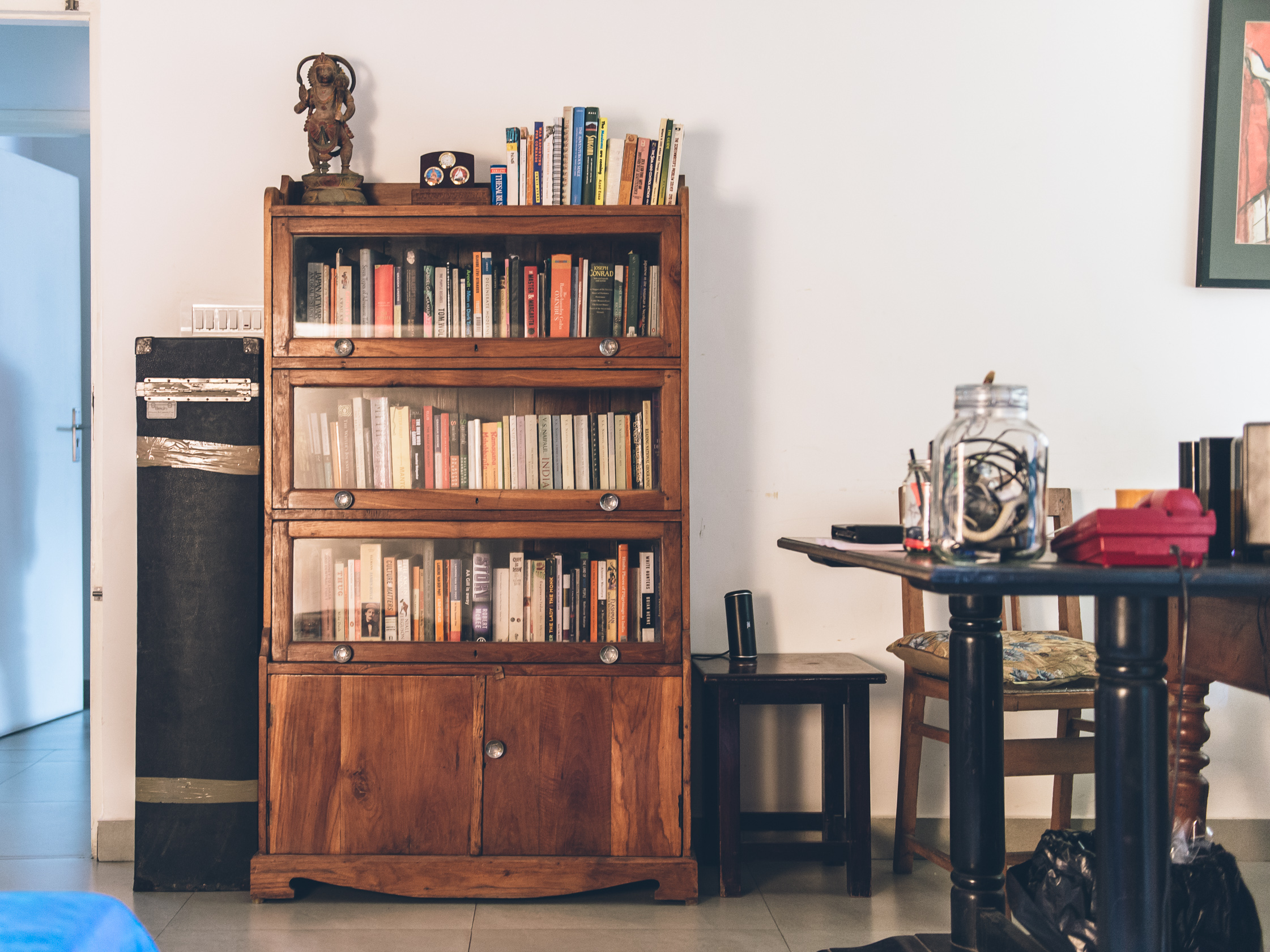
-
The underlying messages in the poems from your children’s book of monsters seem to speak equally to adults – can you recite one of your favorites?
Sure. It’s called “The Small Foot” (pesprocer underdogus).
You must have heard of the Americ an Bigfoot and of dragons breathing fire,
Lets not forget the Himalayan Yeti and the blood-sucking vampire,
The world has famous monsters; We know their gory glories,
But you haven’t heard of the Small foot, which has disappeared from most stories.The Small foot is a monster once present everywhere,
Often living in forests, now only found elsewhere,
Their feet are really tiny and hardly leave a mark,
Very easy to lose track off, when everything goes dark.They have lost a lot of wars and lack a written history,
Most of their customs and epic deeds are a forgotten mystery,
I’ve seen some survivors, who seem wounded, bruised, and sore,
And some species are extinct but no one talks about that, anymore.Some important things to remember, even more important to tell,
All creatures are trapped in history, and history is trapped in them as well,
One must examine famous monsters, the ones which pretend and gloat,
Because the past really happened, and history is only what someone wrote.The Small foots will rise one day and become the same as the Bigfoots were,
And then they will rewrite things and insist that they were fair,
They’ll set up universities to support, prove, and cite it,
Remember that history is very kind, but only to those who write it.We know so little about the past, to say the very least,
but one can still hear the songs of all these various beasts,
Various tunes, volumes, notes at all extremes,
A quiet little orchestra playing in our dreams.

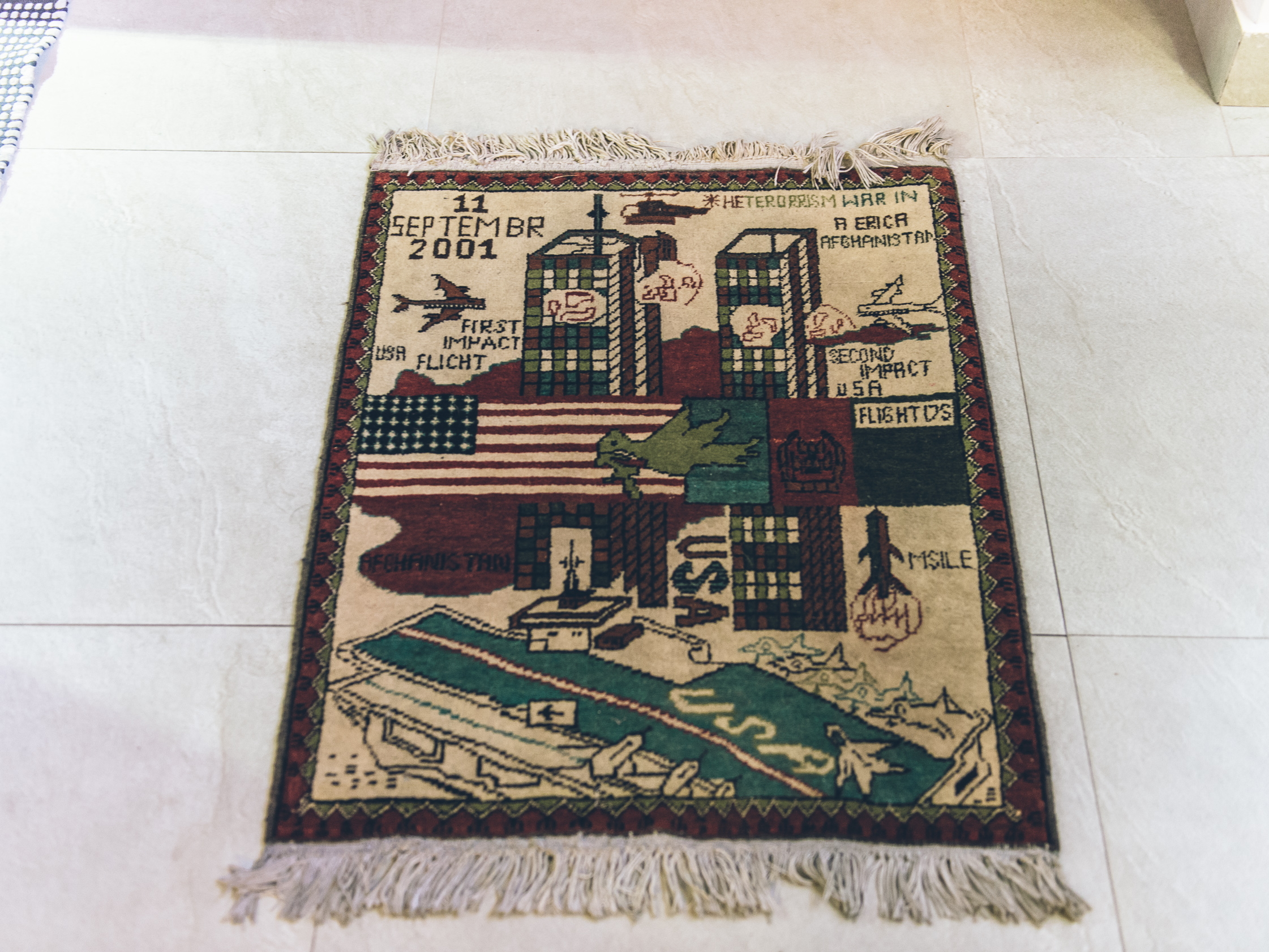
-
Why does every old Bangalorean says the city “used to be great”?
For so long Bangalore was a utilitarian, urban sprawl where traditional industry and government institutions were the main employers. All that has changed with the process of economic liberalization, which began around 1991. Most of the people who claim to you that Bangalore was once great come from a specific group in the cantonment area, built by the British who sought a kind of isolation away from the old city under the control of the princely state of Mysore. The British ensured that the population of the Cantonment came from outside Mysore, Telugus, Muslims, Christians and Tamils, mostly from the madras presidency. With liberalization, the cantonment, so to speak, as well as Bengaluru, has seen a huge number of immigrants from other parts of the country and the old city.
The newcomers to the city or the first consumerist generation might not have so much loyalty to place or history and given its self-absorption, old Bangaloreans have suffered with the influx of people and industry, driving real estate prices up and leaving less room for people of lesser competitiveness. Regarding Bengaluru, I still love the place though it’s certain people I love which keep me here, more than the place and its traffic.
-
So where do you find your balance?
I feel very often that I am an English speaking Indian that comes from a particular background in this city, and that somehow my world has shrunk greatly when the city grew for awhile that is, but then again, it has led to so many understandings of what the place is, how things change and who I might truly be. I find my balance in the garden I create for myself. You create your own garden with friends, relationships and places.
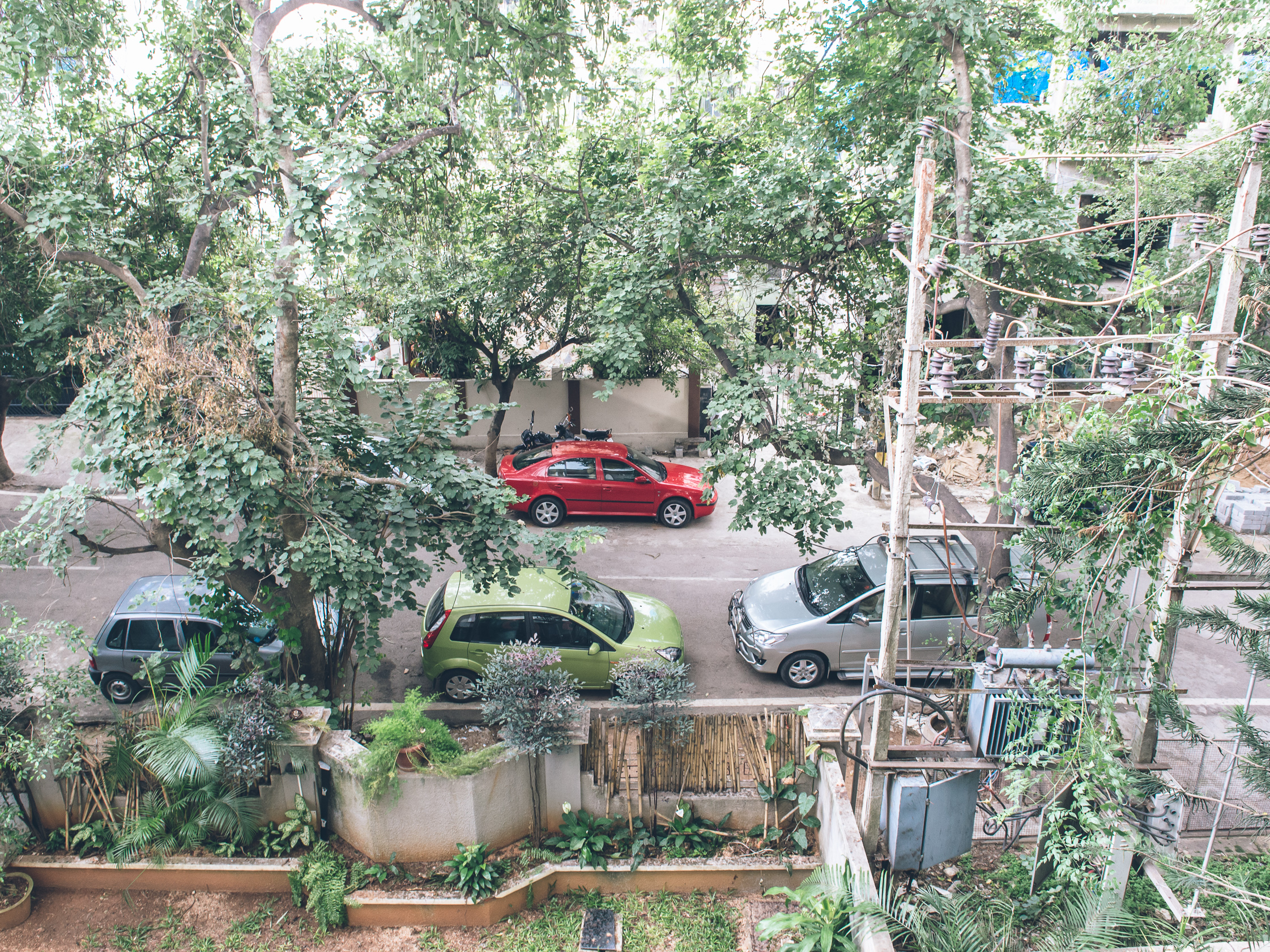
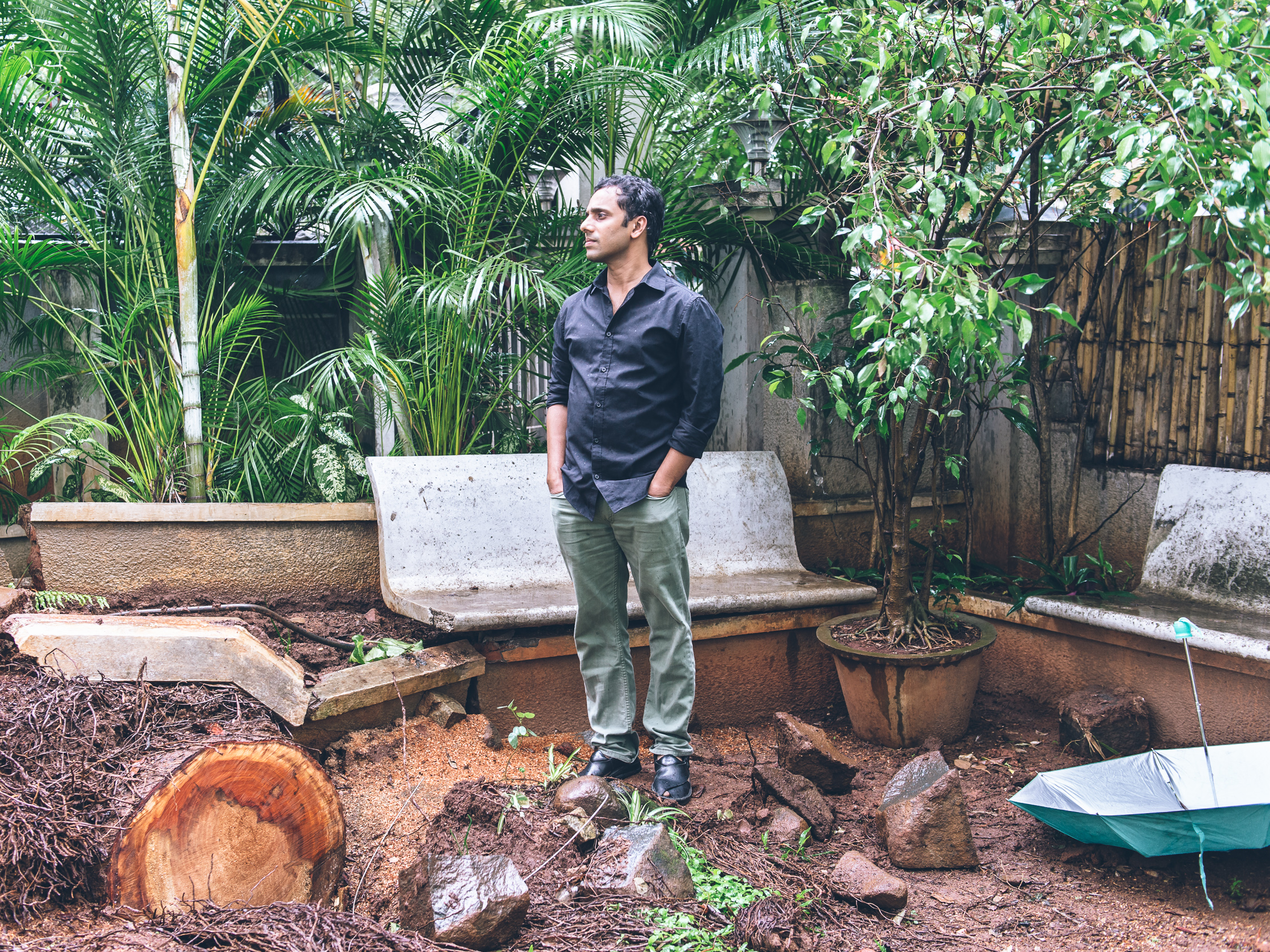
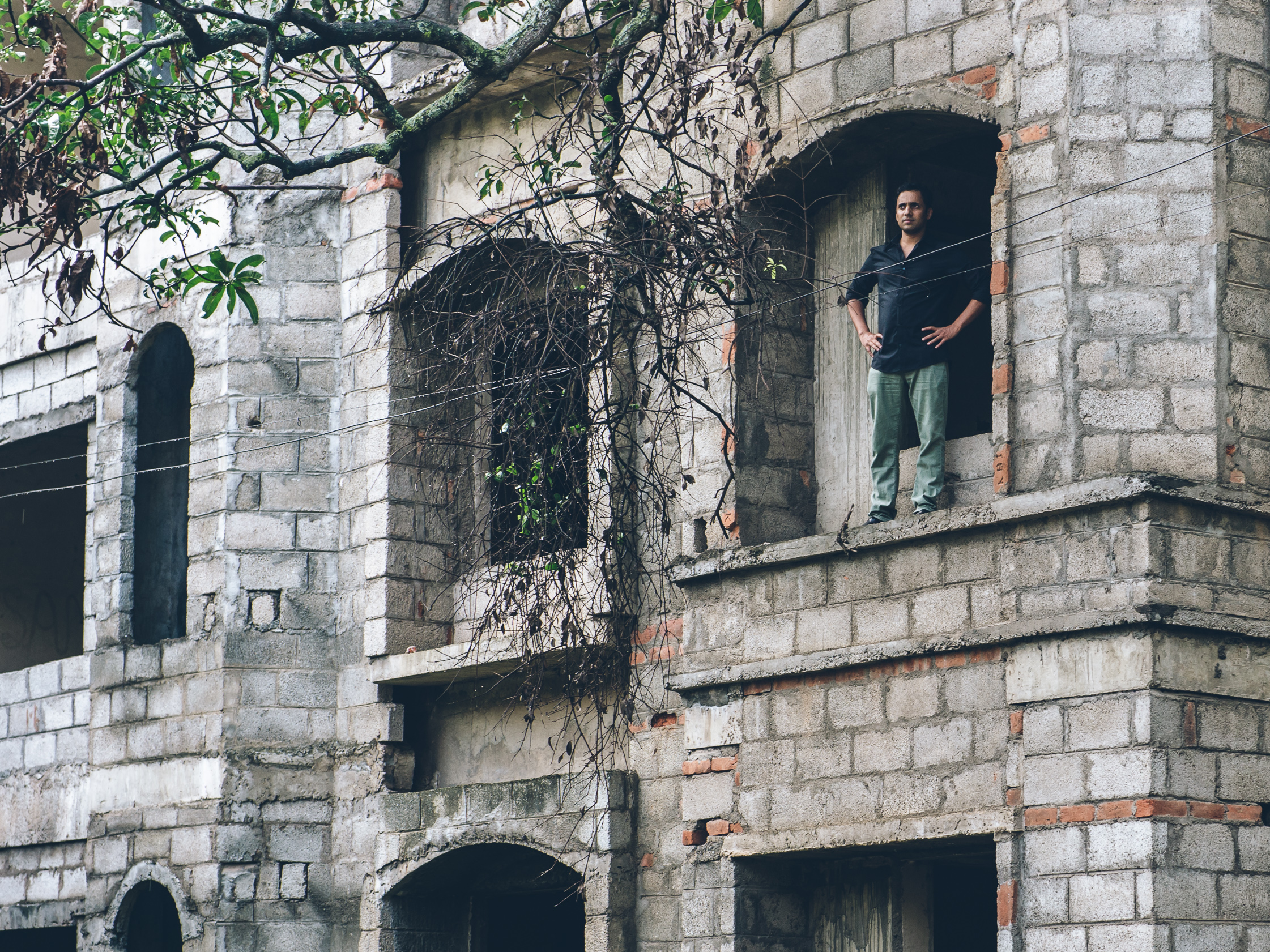
“I sometimes wonder if what is happening in the city is good for the soul, if it is good for the essential quality of life.”
-
You literally seem to have done that with this place, you mentioned it was two apartments made into one?
Yes, though this was quite difficult. To find real estate in India is not easy. It’s an expedition with great adventure and you meet all kinds of creatures along the way.
-
What were some of the important things for you when you were constructing?
This is an older building and I renovated the flat simply without spending too much. I prefer smaller buildings to the gigantic concrete anthills that you have all over Bangalore. Regarding the interiors, I wanted to keep it easy to clean with lots of light, so that objects that I’ve collected would be comfortable. The flooring is industrial tiling, it’s cheap and I liked it because I felt it was the color of clouds.
-
That being said one of the last remaining bungalows around the corner got knocked down a few months ago. Do you find yourself nostalgic?
That bungalow belonged to a friend of mine and it was very beautiful. Bangalore used to be a large town where everyone knew everyone. With the economy opening up, people have come from all over the country and there is a new religion in Bangalore; it’s consumerism with its deities in the form of magnified buildings and so much glass, steel and air-conditioning in a city of limited resources.
I sometimes wonder if what is happening in the city is good for the soul, if it is good for the essential quality of life. I am reading this book by Jane Jacobs called The Death and Life of Great American Cities and based on some of the indications of that book I think we are heading into a great decay of sorts. For example, many of the cities’ lakes have been built over which is why parts of the city are flooded every year and groundwater is running dry. Nature is not very nice when it is backhanded. Maybe I am being a bit fatalistic, but I am concerned for the future.
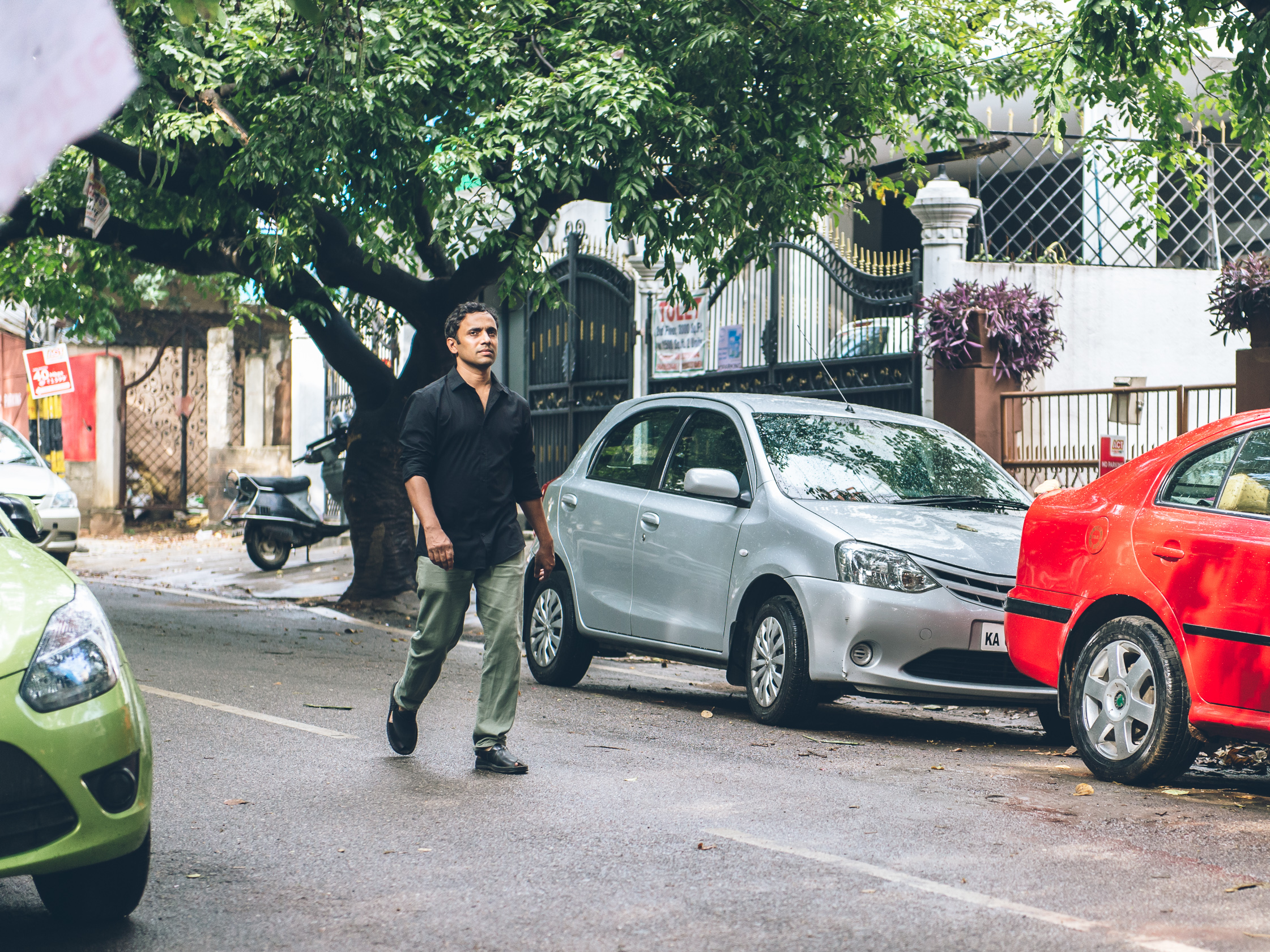
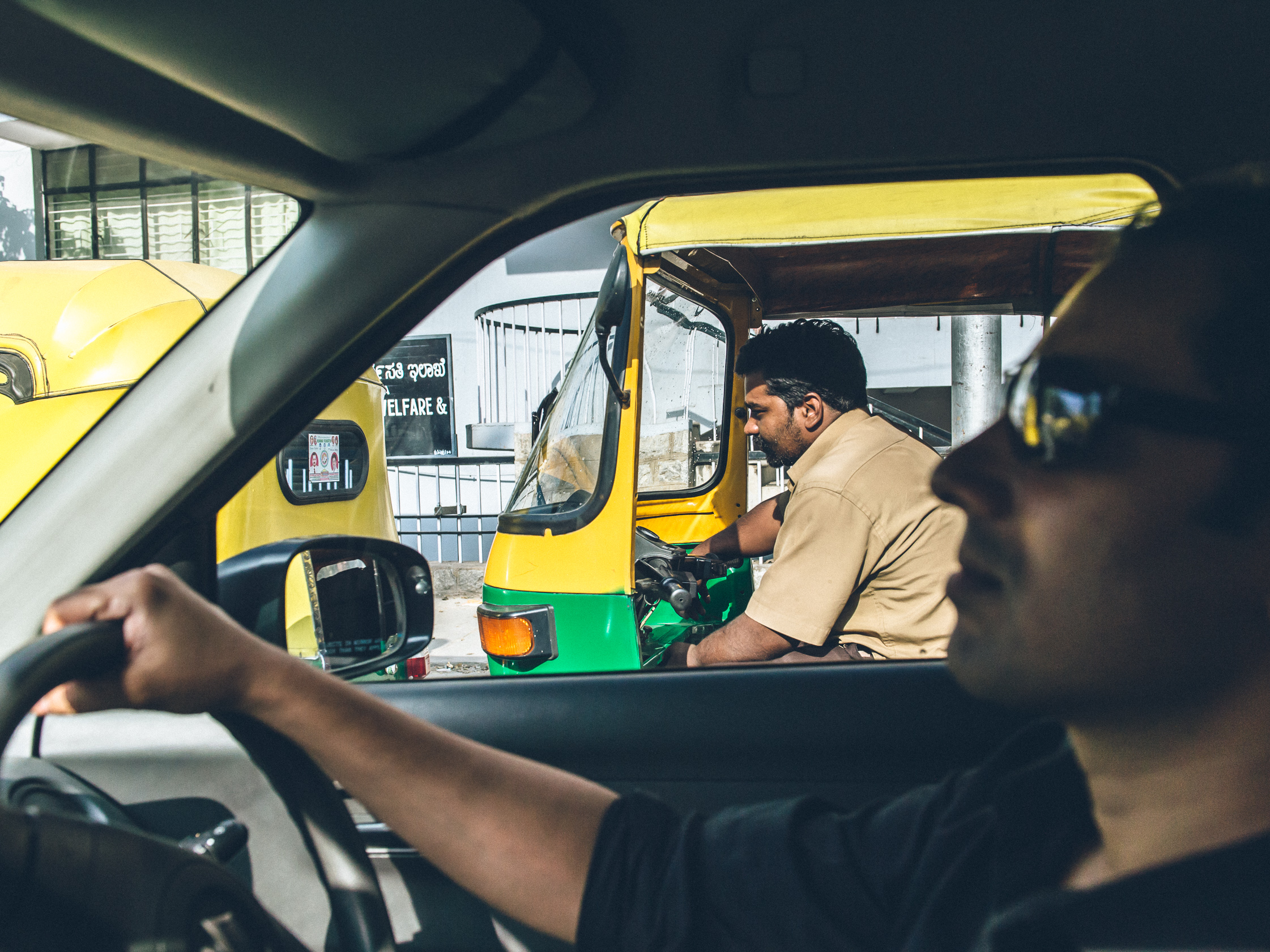
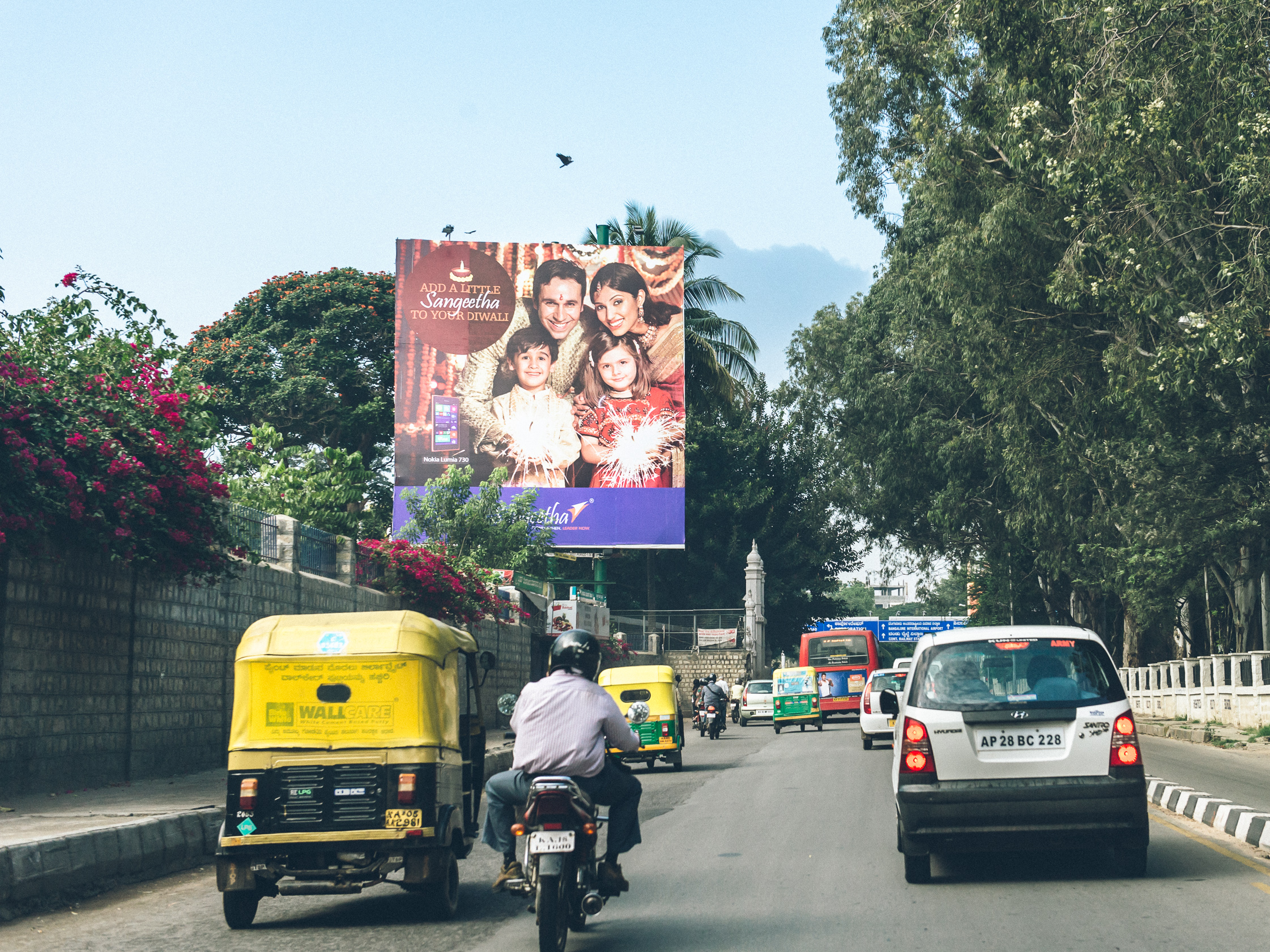
-
The furniture in your home looks as if it’s had a history, where is it from?
A lot of it is actually flotsam, which I picked up here and there. India has a lot of old furniture floating about and a lot of absolute junk as well. One of my favorite chairs was restored after I retrieved it from an old house. Another I saw being sold on the roadside outside the city. There’s also a guy who brought a whole bunch of furniture from Kolkata down on a train and he sold it here for a song. I am sure a lot of the furniture in my apartment has found me after much adventure.
-
Do you have any favorite items; pieces of furniture; belongings?
I try not to get too attached to things and have given away so many objects. Many of the curious and antiques were given to me as gifts, like that old statue of Hanuman. I think I like the revolving chair I found being sold on the roadside a few months ago. I like some of my own photographs, like the crocodile tail disappearing into the water; they reminded me about certain times I’ve had and stories I’ve lived, which have now passed.
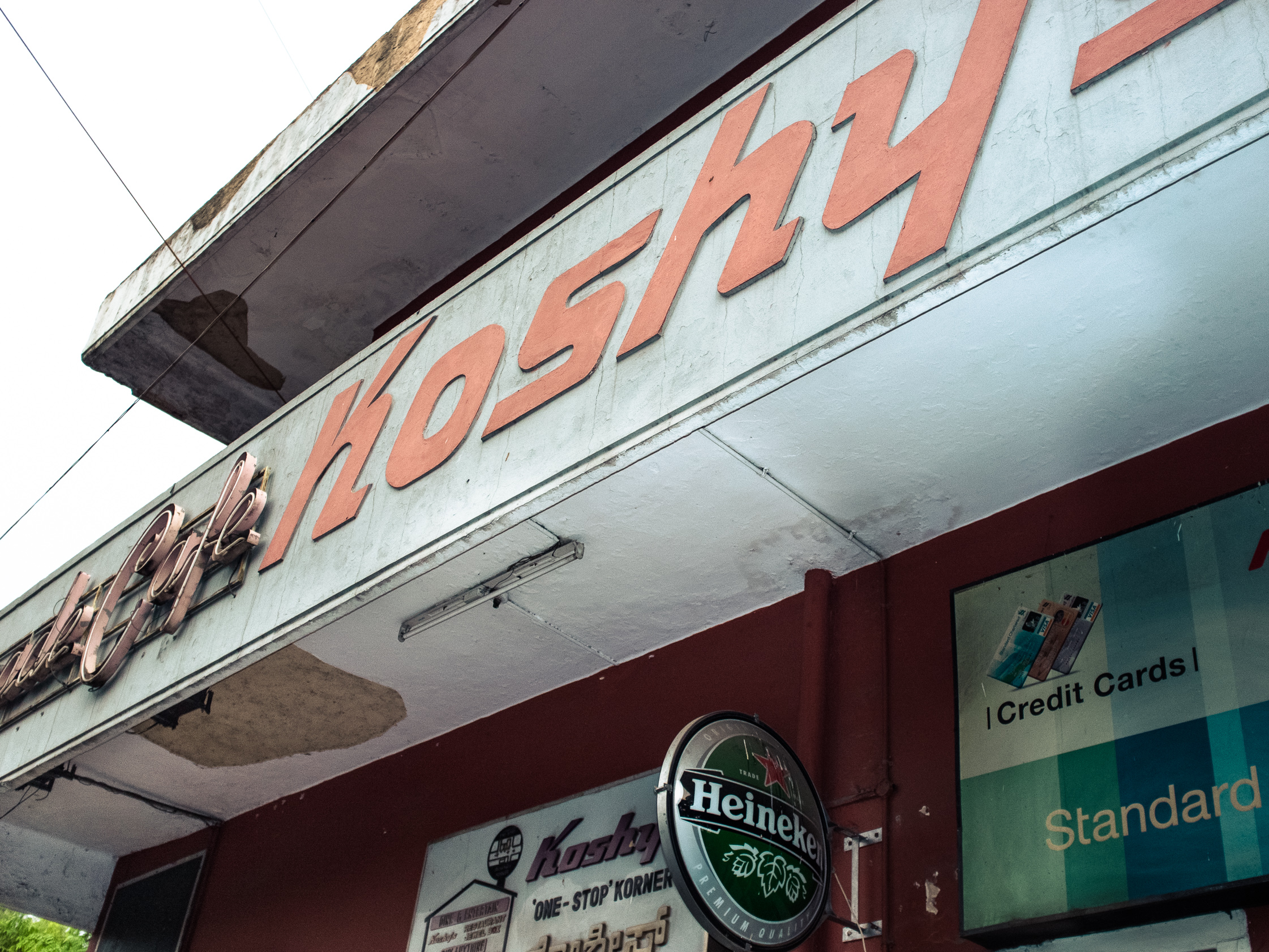
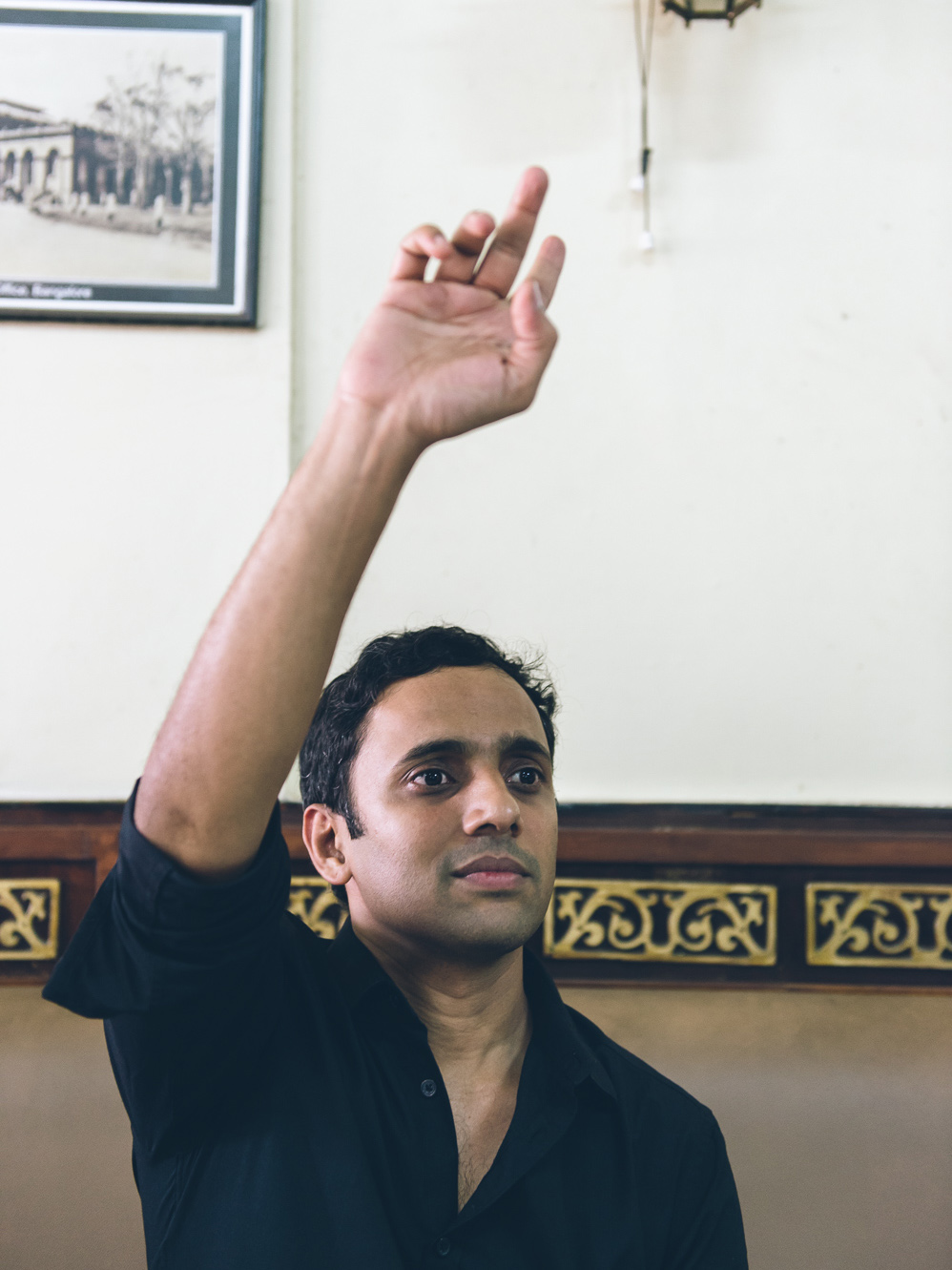

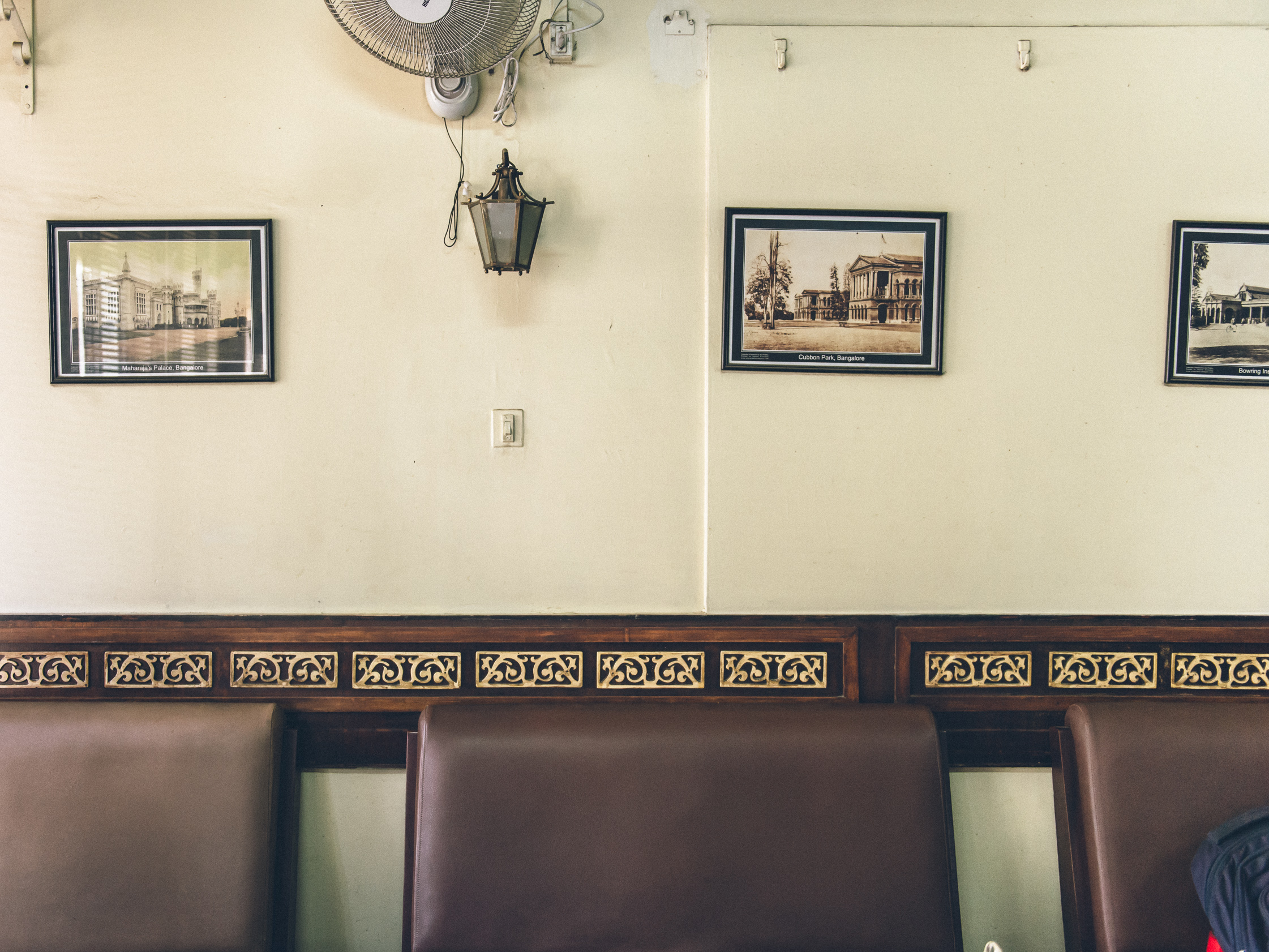
-
What’s about all the old maps on the walls?
I like maps of places that don’t exist anymore. These maps are very old and seem to suggest change, that the world is always changing and this time is all we will ever have and will never recur again. For instance, this map has a place called “Kafiristan” or “Land of the Kafirs” which is actually part of present-day Pakistan, now renamed “Nooristan” or “new country.” It had its own culture and history and does not exist anymore, its culture and people destroyed. The movie “The Man Who Would be King” with Sean Connery and Michael Caine is set in Kafiristan. So relevant today, in places like Syria and Iraq.
-
You have some controversial and conversational art pieces. Where are they from?
I was in Afghanistan in 2007 and there was a carpet seller who had decided to express his thoughts on 9/11 by weaving the story into a rug. The Koran cover with a British service revolver on it was done by a Pakistani artist. The little Christ above the door was drawn by Madhvi Parekh. The large drawing was given to me by Justin Duerr, an artist about whom a film was made “Resurrect Dead: The Mystery of the Toynbee Tiles” and who I met at the 2011 Sundance Film Festival.
I sometimes don’t know if I am collecting these people or if they have collected me. I find great beauty in nature, like fossils I’ve found or been given like this ammonite from the Himalayas or this antler I found while trekking. Most of the things I own have been given to me as gifts or I have been compelled to buy them with serendipitous circumstance.
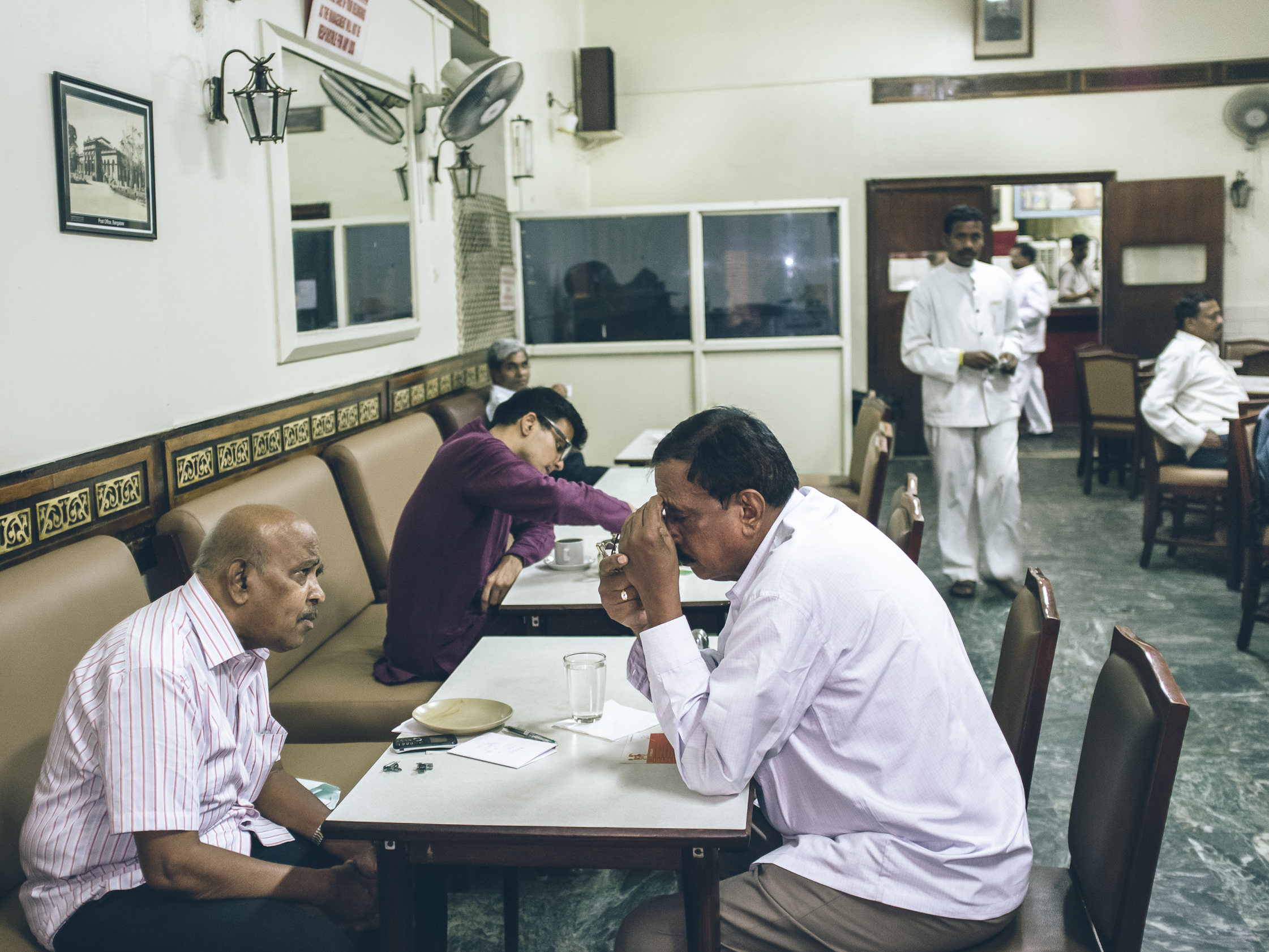
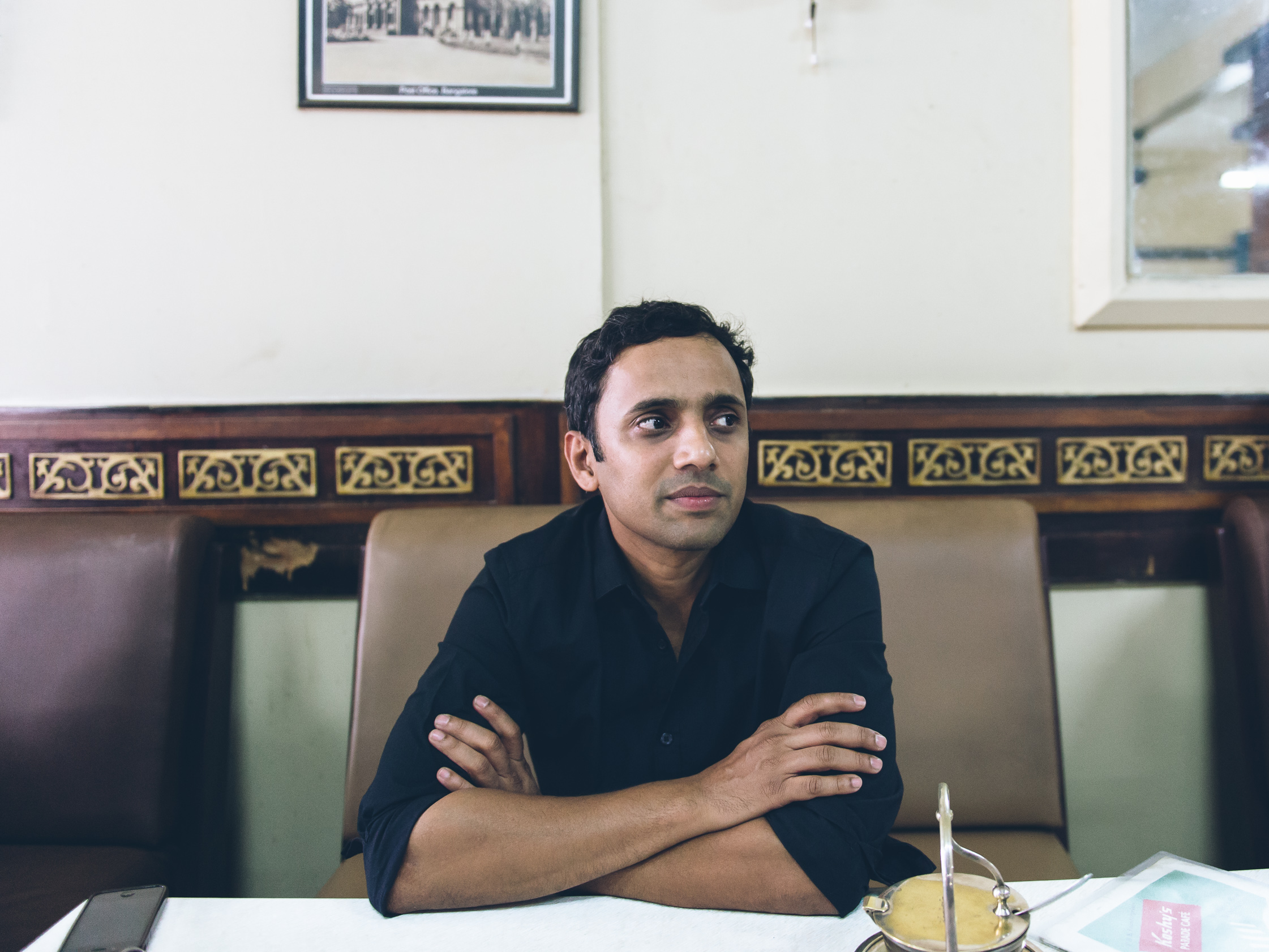
-
Some of the best things about the city? Your favorite café?
The best things for me about the city are the people I know and love and the context it provides me as an artist. Bangalore is surrounded by some of South India’s most beautiful places. I love fishing and the Cauvery River is a couple of hours away as well as so many beautiful temples and forests. Coorg, Bandipur, and Nagerhole are so amazing, our very own Serengeti. One of the good things about Bangalore, is that one can also escape it quite easily if the urgent need arises.
I do like Koshy’s restaurant, which is more of an institution than a restaurant. There are dishes, which I like, but you go there for the company. You know some people are going to be there every day and many of them have been in this city for ages and have its experience flowing in their veins. Koshy’s is an island of sorts that’s remained unchanged in a city that’s changed entirely and many people from its “old days” frequent it. It’s another time which still exists and still not yet out of place.
-
Do you think it’s a matter of time?
Matter of time for it to disappear? Of course. Everything goes.
Ryan Lobo is a photographer and filmmaker – find out more about his work, here.
We’ve traveled to India before – meet founder of Samoolam collective Usha Prajapati and master printmaker Vijendra Chhipa.
Photography:Mahesh Shantaram
Interview & Text:Malika V. Kashyap
